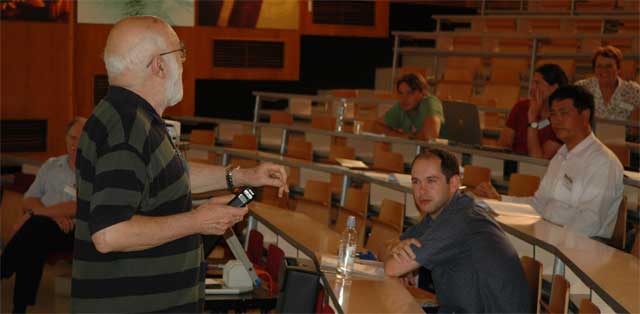LOESSFEST'09 | Aug. 31st – Sept. 3rd, 2009 |Novi Sad-Serbia
A Partial History of Loess
Smalley, I.1
1Giotto Loess Research Group, Waverley Materials Project, Nottingham Trent University, Nottingham NG1 4BU, UK.
Topics + people + regions & countries. Three main topic streams: sedimentology + stratigraphy + engineering geology. 60 people have been identified and listed (but more names are required; target 100). Loess awareness grows from Germany in 1824- worldwide by the end of the 19th Century. Awareness is still developing in India & Iran & Iceland & Ireland, but is good in Italy & Indiana & Illinois & Iowa (and now in Idaho). Is loess subsumed by dust?- maybe (maybe not). Loess is large dust; not to be confused with small dust. [note: Partial = incomplete, Partial = biased, Partial{to} = enthusiastic{for}]. The great event was the invention of high precision loess stratigraphy and the opening of the door on to Quaternary complexity. The precursors were Hardcastle and Soergel but our Darwin was Liu Tungsheng, whose memory we salute.

In engineering geology the loess world is totally wrapped up in the problem of hydroconsolidation and subsidence. History is marked by failure events, in particular the foundation failure at the Atommash factory in Volgadonsk and the collapse of the Teton Dam in Idaho. It appears that hydroconsolidation is largely controlled by the amount of clay mineral material in the system; a critical range of clay mineral content allows structure collapse and hydroconsolidation to occur- this idea is still being established. Two sedimentological problems have dominated the history of loess investigation (i) how do loess deposits form?, (ii) how is loess material [mostly quartz silt] produced?. Q(i) was ‘The Loess Problem’ and monopolized loess studies for the nineteenth century; by 1900 a concensus favoured aeolian deposition, but the 20th Century delivered a persistent maverick. L.S.Berg insisted that loess was the product of weathering and soil formation; he promoted ‘loessification’ the turning of non-loess ground into loess ground. We should appreciate Berg, he generated interest and controversy. There could be a tail of truth in the Berg assertions; it looks as though collapsibility does grow in loess deposits; aeolian deposition provides open, metastable structures but collapsibility grows as clay accumulates at particle contacts.
Particle making was perceived as important by Hardcastle (1890) and by E.E.Free (1910) but it was the relatively neglected topic in loess sedimentology. It perhaps has most resonance when considered in relation to discussions on ‘desert’ loess. Do large hot sandy deserts make loess particles? Apparently not, but they can act as efficient particle reservoirs and supply material for down-wind loess deposits
Awareness is developing in the UK & the UAE & Uganda, but is well-developed in Ukraine & Uruguay & Uzbekistan & Utah & the USA as a whole (was busy in the USSR but no action at all in Upper Volta). From 1960 to 2000 loess activity was promoted by the INQUA Loess Commission, which was essentially a vehicle for Julius Fink’s loessic enthusiasm. For thousands of years the Chinese lived in and on the loess of the North-West; in the 18th Century Count Marsigli described and sketched the loess in the Danube valley; and early in the 19th Century Karl Caesar von Leonhard named it. It’s a strange name (but we have grown used to it); as money fades from view and natural resources become more important we may need to protect and preserve it. If loess (+ chernozemization) makes the best agricultural land in the World- we should appreciate it.



